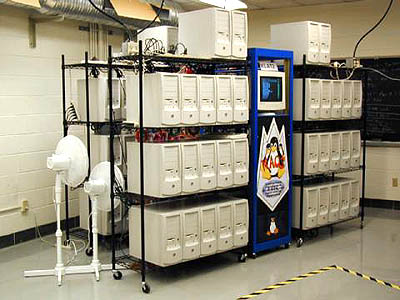Op Ars Technica is een technisch, maar zeer interessant verhaal te vinden over de werking van de KLAT2 (Kentucky Linux Athlon Testbed 2) supercomputer. Deze cluster is ontworpen door mensen van de University of Kentucky en bestaat uit 64 Athlon-gebaseerde systemen. KLAT2 gebruikt zeer efficiënte technieken om de prijs van deze supercluster laag te houden en de performance omhoog te halen. Dit laatste gebeurt o.a. door gebruik te maken van de 3DNow! technologie:
Most processor instruction sets recently have been extended with what we generically call SWAR (SIMD Within A Register) instructions that allow the programmer to specify quite a bit of parallelism. Using these SWAR instructions for scientific computing, not just the 3D games that motivated their development, is the other technological key to achieving supercomputer performance at record low cost. This performance boost isn't trivial to achieve, but the hardware to support it is already there, so it is free.
Now you're probably thinking that Athlons are pretty fast anyway, so why do I need to worry about SWAR/3DNow! stuff? While it is true that, per processor, the Athlons in KLAT2 are slightly faster in double-precision floating point performance than the Alphas in LANL's Avalon, using 3DNow! can provide a huge additional boost. On ScaLAPACK (the benchmark application used in the Top500 supercomputers list), KLAT2's 80/64-bit double-precision performance is around 22.8 GFLOPS, a very respectable number. Then again, using 3DNow!, KLAT2's single-precision ScaLAPACK performance zips to over 64 GFLOPS. That's nearly a 3X boost at no additional cost!
Er valt heel veel over dit artikel te zeggen, vooral het gedeelte over het oplossen van het 'netwerkprobleem' is zeer interessant, maar veel te lang om iets uit te quoten. Gewoon zelf lezen.
 |
